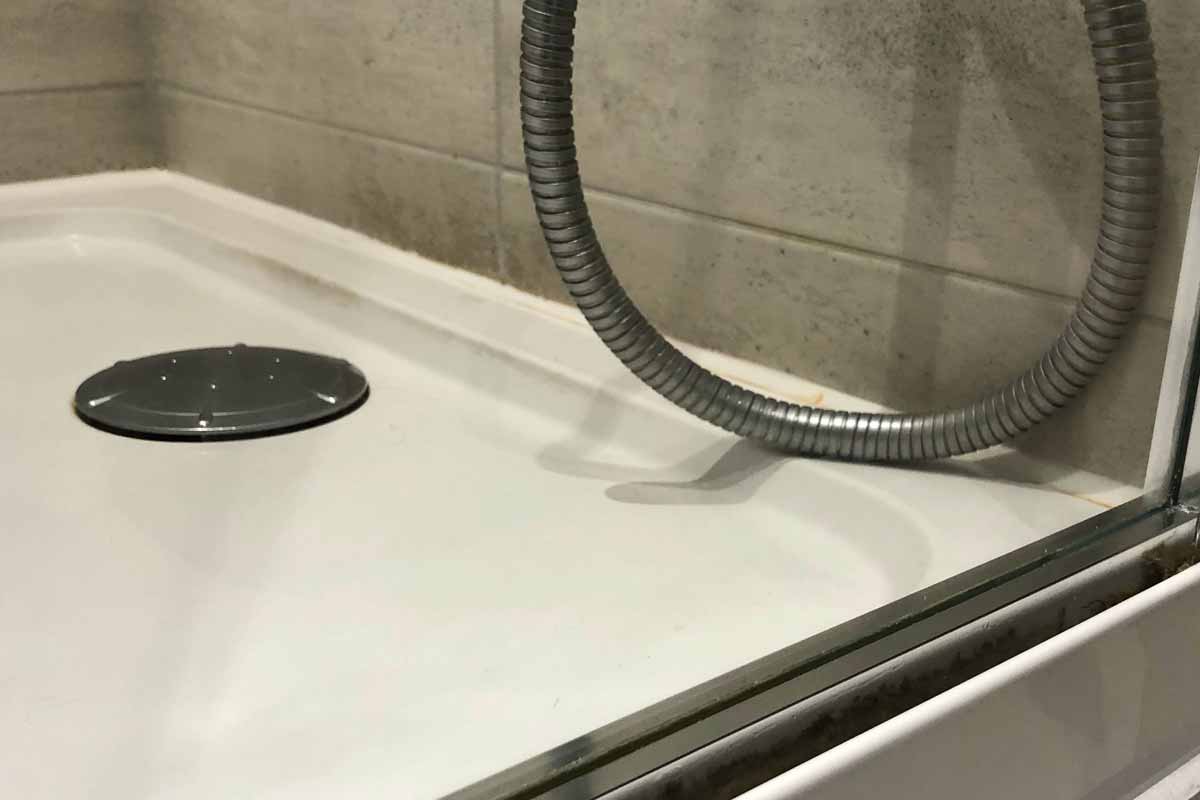A mess hides where glass meets metal, and it never announces itself. Moisture sits, soap dries, and grit settles in tight corners. You notice drag, squeaks, and dull rails long before you see the cause. Clean, smooth motion returns once you treat shower door tracks the right way. The fix costs almost nothing, takes little effort, and lives beside bandages. It works fast, it reaches tight edges, and it breaks stubborn buildup. Your rails look new again, and they stay that way longer.
What Makes These Narrow Channels Such Dirt Magnets
Moist air lingers after every rinse, and water carries minerals into seams. Soap leaves a film that catches lint and dust, then hardens. Small gaps shelter spores and grime, while rollers nudge residue deeper. Tracks feel sticky, and glass starts to hitch across the rail.
Even regular bathroom cleaning often skips these channels because they sit low. Edges hide under the door, and corners resist wide sponges. Spray misses the lip, and cloths snag on screws. Because access is awkward, buildup seems inevitable, and many people simply ignore it for months.
That neglect invites soap scum, hard-water deposits, mold, and mildew to settle. The mix looks gray, sometimes black, and it traps small grit. Over time, drag increases and the door strains. A targeted routine restores glide because it reaches far inside shower door tracks where sludge hides.
Why This First-Aid Staple Cuts Through Bathroom Buildup
A common first-aid bottle solves the mess while keeping costs low. A 32-ounce 3% solution often sells near $1 at general stores. The same liquid you keep for small wounds also powers cleaning. It fits tight spaces, it foams on contact, and it lifts residue.
Its oxygen action disrupts organic soils as bubbles crack the film. It kills bacteria, fungi, viruses, and even spores as it works. That means the rail gets clean while germs stop spreading. The surface looks brighter, the odor fades, and the channel releases trapped grit.
Because it both sanitizes and loosens grime, the result feels thorough. The finish looks clearer, and the glass slides with less effort. You also avoid harsh fumes many strong cleaners produce. As the rails free up, you remove more sludge from shower door tracks with every pass.
Step-by-Step Care for shower door tracks That Actually Works
Start by covering the channels with the 3% solution so it reaches corners. Let it sit between 10 and 30 minutes so bubbles work deeply. The foam breaks bonds that hold mineral film and soap residue. While it works, gather a firm brush, a scraper, and microfiber cloths.
Following the dwell, scrub along the grooves with a firm, small brush. Remove loosened sludge using a plastic scraper or an old card. Rinse the rail with warm water, then wipe dry to observe progress. Repeat the soak and scrub if persistent stains still grip shower door tracks.
For heavy grime, add a small drop of liquid dish soap to the liquid. Load it into a clean spray bottle only for the application step. Do not store leftovers in that bottle; keep the solution original. Aim into corners, spray sparingly, and flush residue with warm water.
Safety and Material Checks When Treating shower door tracks
Check the metal before you begin, since high concentrations can corrode brass, copper, or zinc. The 3% strength is considered safe for routine cleaning on most rails. When uncertain, test a small hidden spot first. You protect finishes, and you avoid marks that might dull hardware.
Although gentler than bleach, the liquid still deserves respect during use. Turn on the bath fan, and open a window for airflow. Wear gloves from start to rinse so your skin stays protected. Keep bottles upright, cap them tight, and wipe drips as you move.
Never mix it with vinegar or other chemicals because reactions can be risky. Label any sprayer you use only for the application step. Rinse tools well after each pass, then dry the channel to prevent spots. Careful steps keep the process safe and still clean shower door tracks thoroughly.
Smart Upkeep and Extras That Make Future Cleanings Faster
Once rails are clean, a simple weekly wipe keeps film from returning. Run a damp microfiber along the groove after your last shower. Because moisture sits less, deposits stay soft and easy to remove. Small habits now save deep scrubbing later, and glide remains consistent.
Pair that quick wipe with a full rinse of the glass after use. A fast squeegee pass sends fewer suds toward the channel. Wipe the rail lip with a cloth so drops do not pool. Rollers move smoother, and seals stay cleaner because residue loses anchor points.
For corners, reach with cotton swabs or a soft toothbrush for control. A wooden skewer lifts stubborn flecks without scratching the rail. When stains resist, repeat one short soak rather than forcing pressure. Gentle repetition prevents scuffs while protecting shower door tracks and nearby finishes.
Why a simple routine saves time and keeps results longer
Clean rails make every shower feel easier, since doors glide without strain. A small bottle from the cabinet replaces harsh fumes and high costs. You protect finishes, you limit germs, and you avoid wasted effort. With steady care, shower door tracks stay smooth, bright, and ready every day.
